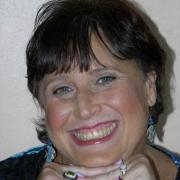The Word Gap: The Early Years Make the Difference

You are here
Children’s vocabulary skills are linked to their economic backgrounds. By 3 years of age, there is a 30 million word gap between children from the wealthiest and poorest families. A recent study shows that the vocabulary gap is evident in toddlers. By 18 months, children in different socio-economic groups display dramatic differences in their vocabularies. By 2 years, the disparity in vocabulary development has grown significantly (Fernald, Marchman, & Weisleder 2013).
The study, conducted by researchers at Stanford University, tested the language processing of 18- and 24-month-old toddlers using pictures, instructions, and eye response. Each toddler sat in her caregiver’s lap as images of two familiar objects were shown on a screen. (The caregiver wore sunglasses so the child could not be influenced by the caregiver’s responses to the questions or images.) A recorded voice identified one of the objects by name and used it in a sentence (Look at the doggy). The researchers filmed the child’s eye movements, tracking which picture the child looked at (vocabulary) and how long this took in milliseconds (processing time). (Watch a two-minute video of the study at www.youtube.com/watch?v=I7HN5LJOc-w&feature=youtu.be.)
Children from higher economic backgrounds looked at the identified object faster and spent more time looking at the correct image. At 24 months, children from the lower economic group were performing at the same level as the 18-month-olds from the high economic group in both speed and accuracy. The study also focused on the way children process new vocabulary. Here, too, young children from homes with low incomes lag behind children of the same age who are growing up in more affluent circumstances (Snow 2013).
This new information connects to what researchers discovered earlier. The landmark Hart and Risley study in 1995 identified “remarkable differences” in the early vocabulary experiences of young children. Researcher and author Betty Hart described the results of their observations: “Simply in words heard, the average child on welfare was having half as much experience per hour (616 words per hour) as the average working-class child (1,251 words per hour) and less than one-third that of the average child in a professional family (2,153 words per hour)” (Hart & Risley 2003, 8). This is important because vocabulary development during the preschool years is related to later reading skills and school success in general.
What this means for you
Eliminating this inequality will require early interventions that directly address the problem. Preschool teachers can build on what children already know and respond to their interests to introduce and reinforce new words. Here are some things you can do to help preschoolers build their vocabularies:
- Use new and interesting words in natural conversations. Try this at mealtimes or when presenting a new toy or material. Introducing a new word in context helps children learn what it means. For example, it’s easier for children to learn what a ukulele is when they can see and hear it as well as listening to you say the word.
- Use gestures and facial expressions to help children make sense of new words. For example, when introducing the word joyful, you might smile and wave your arms about to convey what it means.
- Sing with children and recite poetry and rhymes to playfully introduce vocabulary.
- Talk with children and encourage children to talk with one another. Keep the conversation going by asking questions, making comments, and inviting children to think and share their ideas.
- Read to children daily, taking time to go over new words. Look for books with illustrations that provide clues to word meanings.
- Think about new vocabulary words that might come up on a field trip as part of the experience. A trip to an art exhibit could introduce the word landscape, while a trip to a pizza restaurant might introduce kneading dough.
- Give children ample time to learn the meaning and uses of new words before moving onto other words.
- Help families understand how important it is to talk with their children and share new vocabulary words. Send home suggested conversation starters based on children’s interests and classroom projects. Include discussion questions in family literacy packs. Post videos of conversations between teachers and children.
- Advocate for equity. Make sure that all children have opportunities to learn and understand the meaning and uses of new words.
References
Fernald, A., V.A. Marchman, & A. Weisleder. 2013. “SES Differences in Language Processing Skill and Vocabulary Are Evident at 18 Months.” Developmental Science 16 (2): 234–48.
Hart, B., & T.R. Risley. 1995. Meaningful Differences in the Everyday Experience of Young American Children. Baltimore: Brookes.
Hart, B., & T.R. Risley. 2003. “The Early Catastrophe: The 30 Million Word Gap by Age 3.” American Educator 27 (1): 4–9. www.aft.org/pdfs/americaneducator/spring2003/TheEarlyCatastrophe.pdf.
Snow, K. 2013. “New Research on Early Disparities: Focus on Vocabulary and Language Processing,” NAEYC (blog), October 29. www.naeyc.org/blogs/gclarke/2013/10/new-research-early-disparities-focus....
Resources
Too Small to Fail. Website. toosmall.org.
Rich, M. 2013. “Language-Gap Study Bolsters a Push for Pre-K.” New York Times, October 21. www.nytimes.com/2013/10/22/us/language-gap-study-bolsters-a-push-for-pre....
White, R. 2013. “Language Gap Between Rich and Poor Evident in Toddlers.” Reporting on Health, Children's Health Matters, October 9. www.reportingonhealth.org/2013/10/08/language-gap-between-rich-and-poor-....
Photo © NAEYC
Laura J. Colker, EdD, is president of L.J. Colker & Associates, in Washington, DC. She is an author, a lecturer, and a trainer in early childhood education with 40 years of experience. [email protected]
